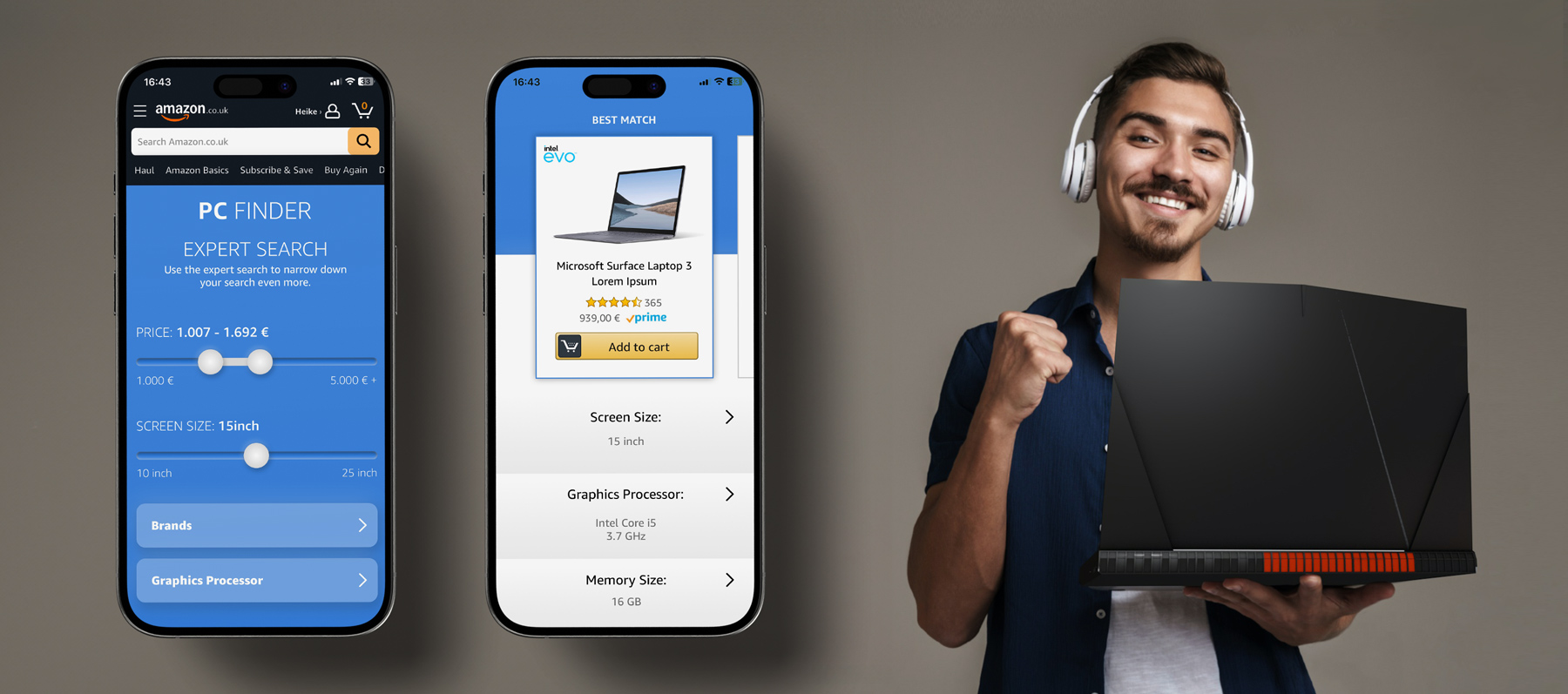PC-FINDER
Helping users cut through complexity to find the perfect PC.
A guided tool that turned decision fatigue into conversion confidence – increasing completion rate by 60% and ROAS to 35.
CHALLENGE
When consumers search for a laptop on Amazon, they are confronted with over a thousand results. Many of which appear indistinguishable at first glance. This overwhelming volume leads to choice paralysis, particularly among non-technical users. As a result, the average purchase journey can take up to 12 days, with only one in four shoppers completing a transaction. The challenge was clear: how might we simplify complexity and turn indecision into confident action?
“I don’t know what to buy – there are too many laptops, and I’m not technical.”
GOAL
Create an end to end product discovery experience that empowers customers to find the right laptop based on their unique needs, improves conversion rates for premium devices, and generates actionable insights into shopping behavior.
MY ROLE
I led the product concept and UX direction from early insights to MVP launch and international rollout. My role spanned research, persona and journey development, design thinking workshops with stakeholders, and hands-on design leadership from wireframes to a distinctive, scalable UI. I drove alignment across business, tech, and design while continuously optimizing the experience post launch based on real user behavior.
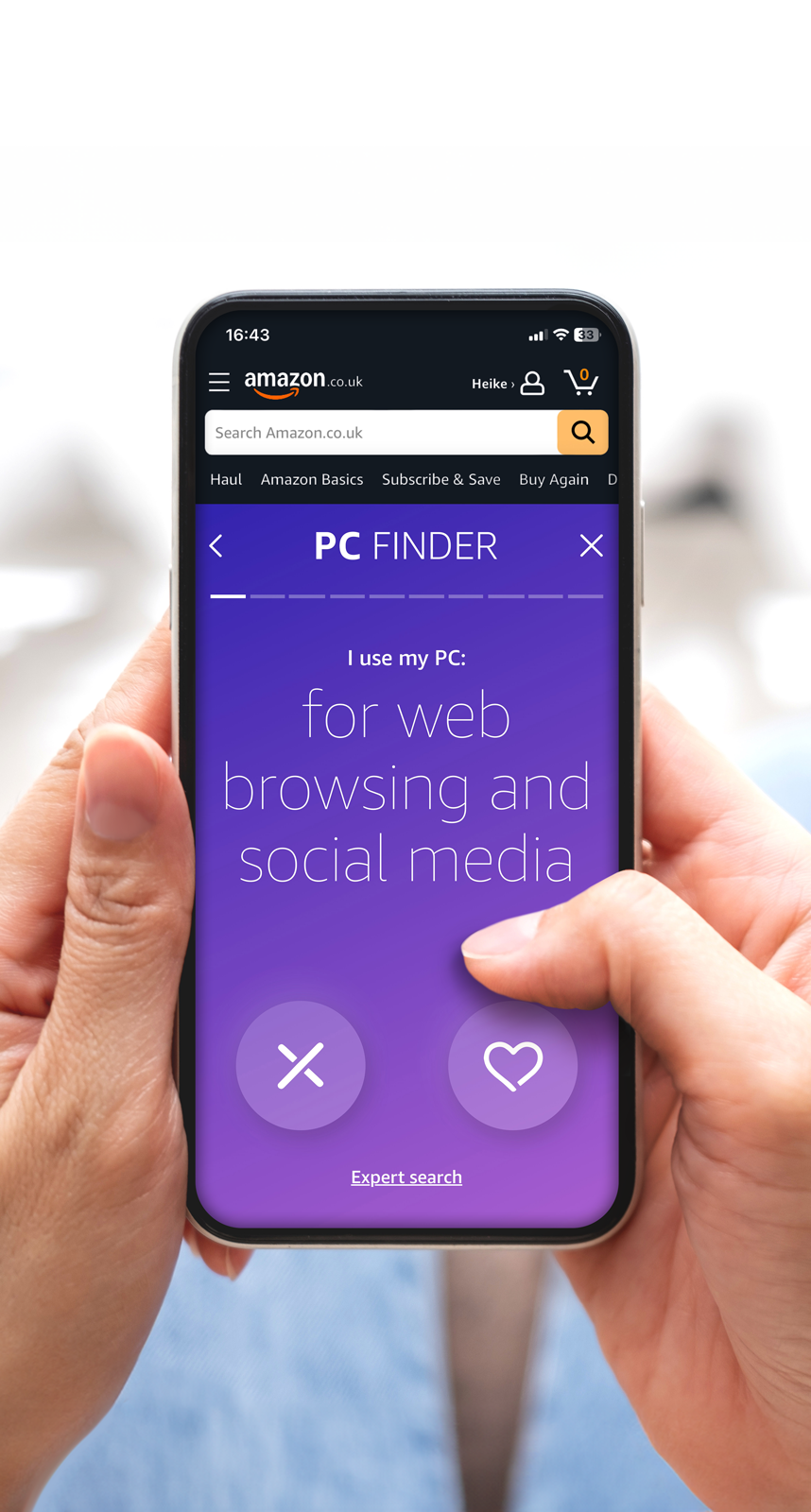
STRATEGY & APPROACH
Based on research, I developed behavioral personas that reflected intent-driven user types such as students, gamers, creators, and professionals. I mapped their journeys and identified core needs, triggers, and frustrations. This informed the Product Value Proposition Canvas and a detailed KPI Tree, aligning design objectives with measurable business impact.
We clarified the core problem: users don’t convert because they feel overwhelmed by too many choices and too little guidance.
I led ideation sessions with UX, Tech, and Retail stakeholders, sketching different flow models including swipe-based guidance and advanced expert filtering. We used tools like the UX Strategy Canvas and the VSDR matrix to prioritize features. The key idea: build a two-path experience that balances simplicity with control. This phase ended with interactive wireframes, which I tested internally with multiple persona types to refine usability and messaging.
(Image: Test from Attention insights, focus and contrast view)
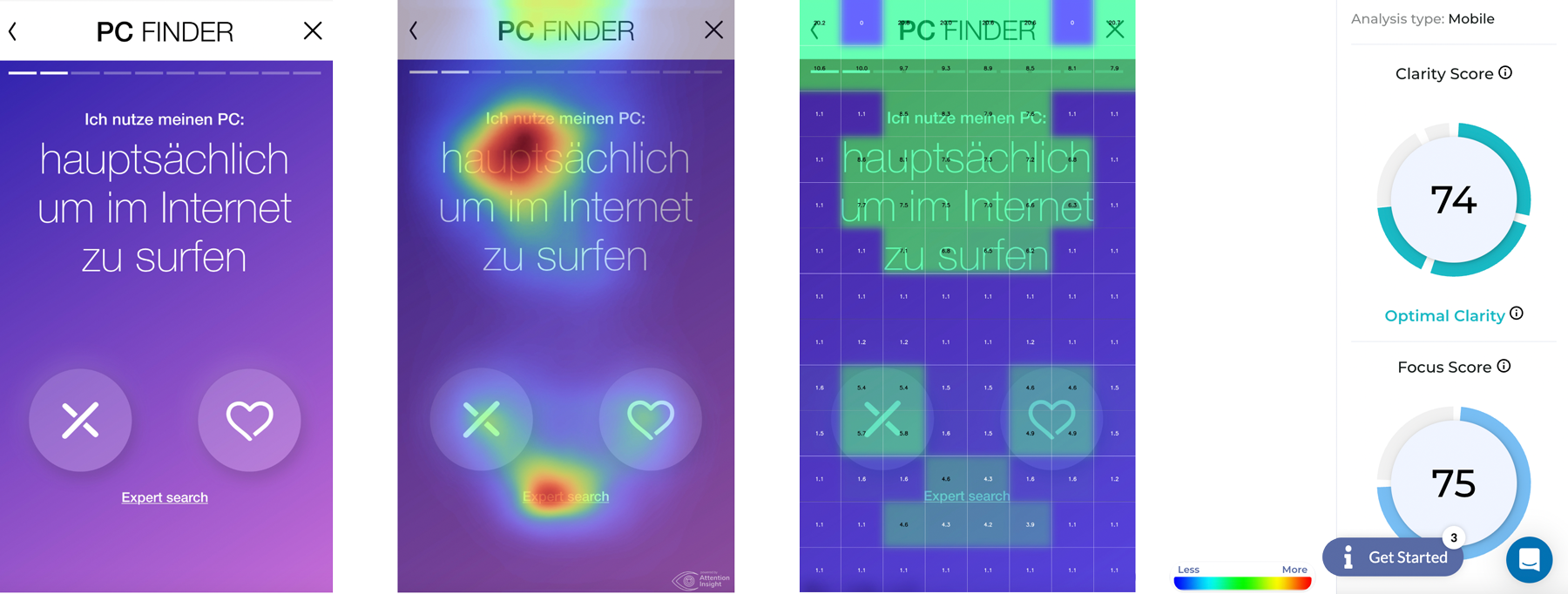
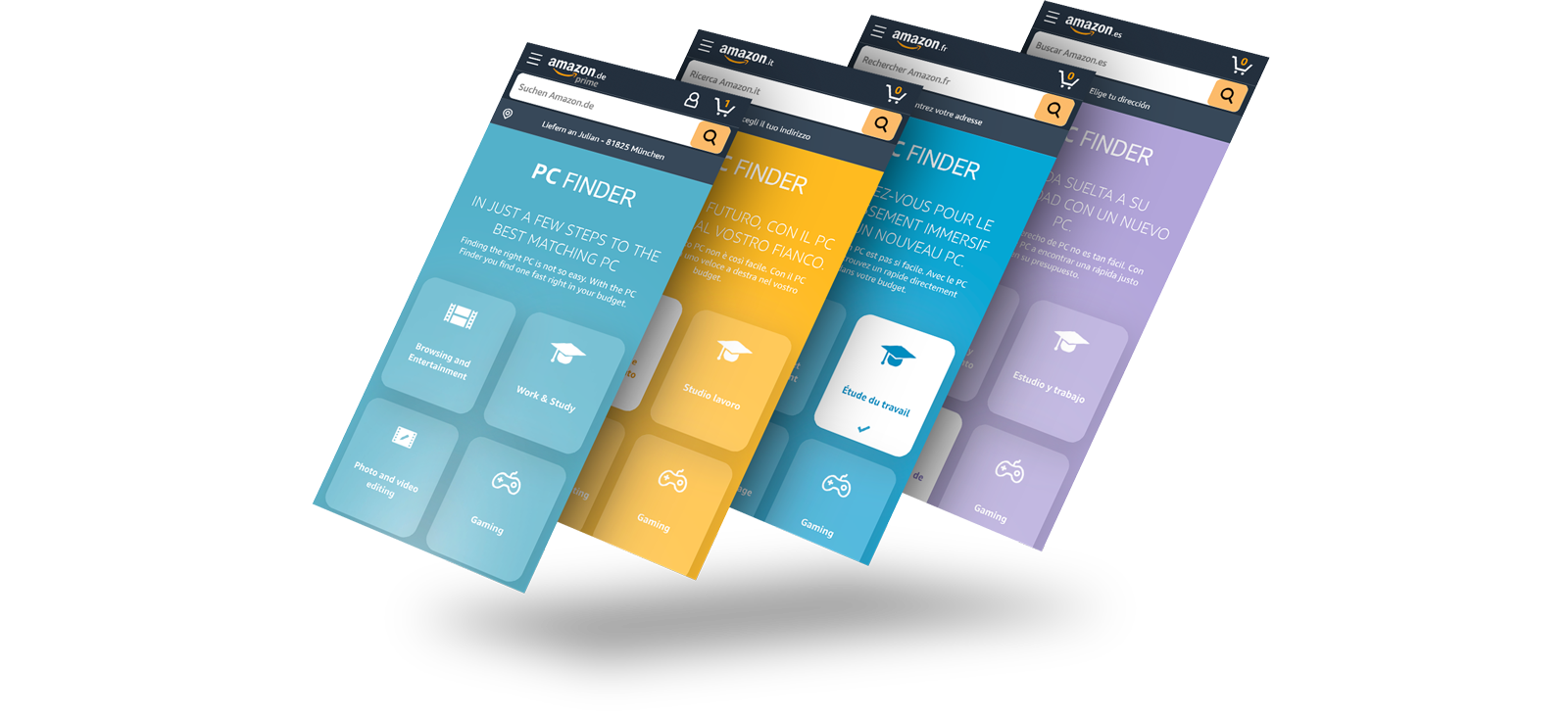
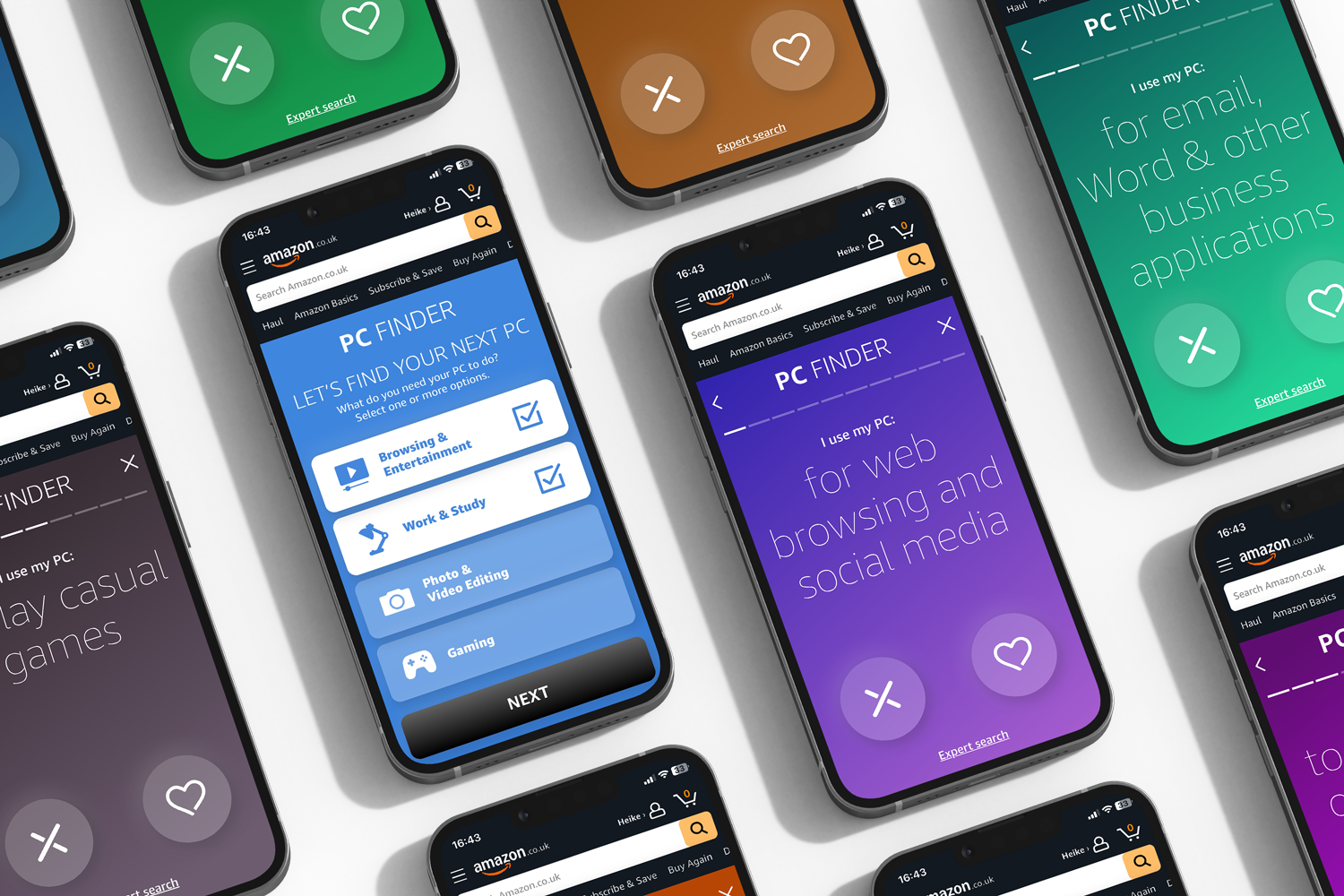
UX & UI EXECUTION
To simplify the complex laptop selection process, I designed two distinct recommendation flows: a guided path based on user intent and a second for expert-level filtering. While the guided flow focused on intuitive, step-by-step decision-making, the expert path allowed full control over detailed technical specifications. Both flows were developed to serve different mindsets and levels of confidence with seamless UX transitions between them.
UX Approach
My goal was to reduce friction in the decision journey through a structured, behavioral-data-driven UX. I used funnel data and observed drop-off patterns to define optimal entry points and interactions. The PC Finder interface guided users through a series of short questions and delivered curated device suggestions, each backed by transparent logic (“Why this device”).
To keep the experience easy, fun, and fast, I implemented a swipe mechanism inspired by familiar mobile interactions. Users swiped right to agree and left to skip, enabling quick responses with minimal effort. The entire journey was designed mobile-first. Since more than 70 percent of Amazon customers shop via mobile, layouts, touch targets, and responsiveness were fully optimized for small screens.
UI Approach
Visually, I created a clean and reduced design system that could flexibly align with Amazon’s brand guidelines while remaining neutral enough for co-branding with OEM partners like Microsoft and Intel. Distinct background colors on each question card helped users recognize progression, reduce cognitive load, and enhance the sense of accomplishment. This visual clarity contributed significantly to the perception of speed and ease.
The result is a scalable, responsive interface that feels lightweight, brand-consistent, and built for confident decision-making.
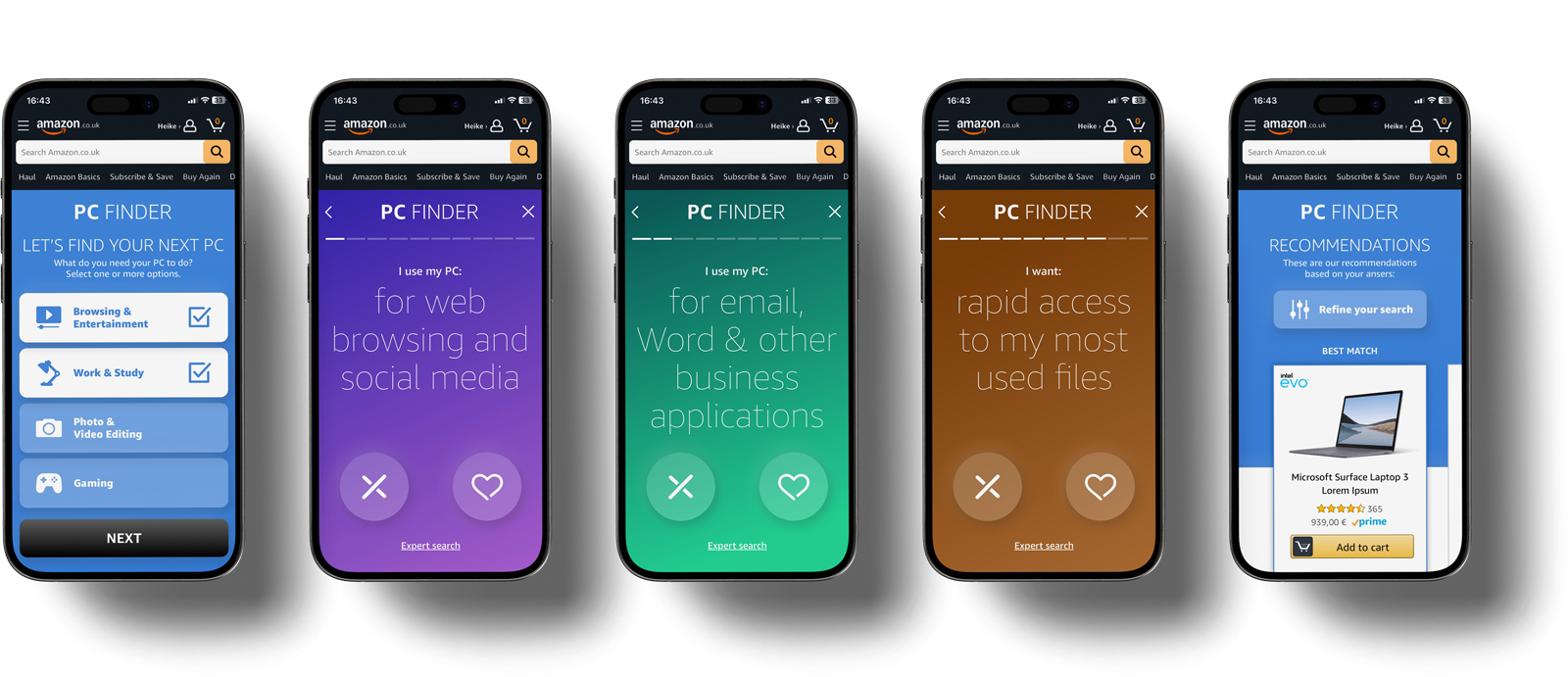

This is fascinating ... (…). Very cool –
I could see this idea applied to monitors and TV’s having just purchased one of each. Shopping for these products is very challenging. Can we make available in other countries?
Paul Kotas, svp at amazon.com
RESULTS
I reinvented the way we ask consumers what they want. Intel and Microsoft loved the PC Finder, and together we expanded it beyond Germany to EU5 countries, the United States, and Canada. After three years, the tool is still live and continues to evolve based on customer insights and performance data.
- The start rate of the tool was 3 percentage points higher compared to benchmarks
- The completion rate was 13 percentage points higher than benchmarks
- PC Finder ASINs are selling 62 percent above the average selling price in the laptop category, with a 50 percent higher conversion rate
- More than 203,000 unique visitors engaged with the experience within the first months of launch
- Overall campaign ROAS consistently exceeded expectations, reaching 20.53 compared to the baseline range of 2 to 5
- PC Finder ASINs contributed to more than 65 percent of category revenue during campaign periods
The PC Finder has become a long term product experience that continues to inspire trust and drive results across markets.
